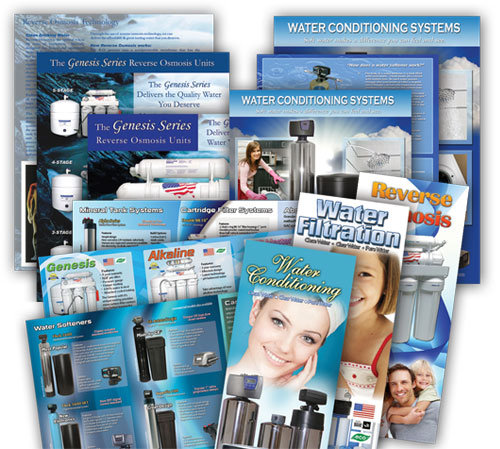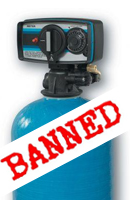The industry group has said the ban is unwarranted.
The agency says the salt in the waste water from water softeners threatens the district’s expanded use of recycled water now being delivered locally to irrigate landscaping, parks and golf courses.
“They’ve kind of banned something that is really not contributing to the problem any more because of how efficient we made them,” said Mike Mecca, product development director for Performance Water Products, a Buena Park-based water softener manufacturer.
Water softeners purge domestic water supplies of impurities which cause hard water buildup on pipes, faucets and showerheads. Industry members want the agency to hold off from enforcing the law and craft a new one that does not ban their business from much of the Inland Empire.
The agency estimates 18,000 households within its service area use ion exchange water softeners. During a special meeting June 15, the IEUA’s governing board adopted the ban which affects an area stretching from Fontana to Montclair south into the Chino Valley.
As explained by the Salt Institute, common ion exchange water softeners work by passing water through a tank filled with “resin” beads that trade calcium and magnesium ions with sodium ions that are bound to the beads. It is the magnesium and calcium in domestic water that can prevent hard water stains, and those materials, along with salt water, gets flushed into the sewer system.
And that’s a big problem, said Martha Davis, IEUA’s executive manager for policy development. ”We’ve been salt-challenged for decades,” she said. Since the 1960s, the IEUA has built special “brine lines” to divert high-salinity industrial discharge out of the Chino groundwater basin, Davis said.
Residential water softeners release some 3,000 tons of salt a year into the local treatment system, according to the IEUA. The U.S. Environmental Protection Agency allows the IEUA to have less than 550 milligrams of salt per liter in the recycled water it delivers.
Current salt amounts are still at less than 500 milligrams per liter. If salt levels exceed the 550 mg level, the IEUA will not be able to send recycled water to customers, Davis said. The agency estimates the salt that water softeners add to recycled water is about 25 mg per liter.
“The issue is what happens in the future, and if more people start using that equipment, and then we’re in danger of crossing that line,” she said. The IEUA’s ban would allow customers to use ion exchange water softeners if the equipment does not send wastewater into the sewage system. Households could use “exchange tank” systems that would require them to hire a company to deliver salty wastewater to an approved location. That kind of service can cost $20 to $30 per month, Davis said.
The IEUA’s member agencies – cities and water districts in its territory – are responsible for passing their own laws to enforce the ordinance. Davis acknowledged the IEUA’s ban on new water softeners is unusual, but even it does not go as far as a measure that completely bans the devices. In Santa Clarita, a stricter ban requires homeowners to immediately remove the water softeners.
The Water Quality Association, which represents the water softener industry, warned that enforcement could lead to local officials filing search warrants to hunt for the now-illegal water softeners and fining and even jailing homeowners. The WQA made that warning in a press release and in a Aug. 12 letter the association’s Irvine-based law firm, Jones Day, sent to the IEUA.
Davis dismissed talk of search warrants and jail as “fear-mongering.” In the worst case, she said, a city inspector finding a prohibited water softener would inform the homeowner of the agency’s $2,000 rebate plan to remove the device.
The IEUA and WQA had been in communication before the ban, but WQA government affairs director David Loveday said adopting the ban at a special meeting prevented opponents from having their say. Davis said holding the hearing in the evening – the IEUA’s board usually convenes for morning meetings — was intended to allow more people to speak.
Nonetheless, the WQA’s lawyers want the water agency to hold another hearing in September giving the ban’s opponents a chance to speak before its board. Loveday said he is confident an all-out ban is not the only solution to the agency’s salt worries.
“Maybe there’s a way of doing a strong education program, a strong efficiency program,” he said. “We’re more than willing to work with them to help them come to a solution over our (portion) of the problem.”




